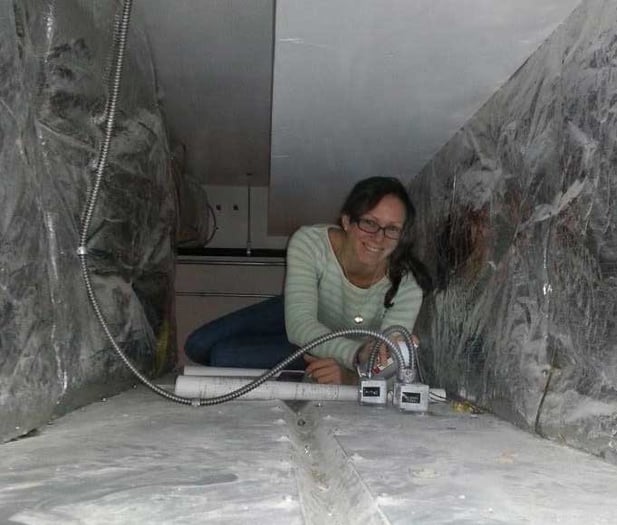Introduction
End users of a building want to inhabit a space that provides, among other things, a comfortable environment with respect to ventilation and thermal comfort. Thermal comfort is typically comprised of two things: temperature and moisture content (aka relative humidity). Ventilation comfort is derived from providing enough outdoor air to a space to satisfy peoples’ need for oxygen, and mitigate buildup of odors as well as other air borne irritants and contaminants. HVAC systems can easily achieve these goals while simultaneously being energy hogs and maintenance nightmares.
“The devil is in the details” is a phase we’re all familiar with. Here, it pertains to the difference between what I call “drive by commissioning,” and detailed, specific functional performance testing (FPT) of HVAC systems and equipment which is necessary to identify incomplete or incorrect programming that will affect long term energy consumption.
How it Should Be Done
For the sake of this discussion I am focusing on HVAC testing but this can be applied to any building system. Functional Performance Testing is commissioning parlance for verifying that systems are set up to operate correctly. We work with a number of different contractors and have heard more than once (fortunately in a joking manner), “Ugh … you guys … I was hoping it was going to be so-and-so because he only shows up at the end and looks at the graphics.”

HVAC FPT is a vetting of the controls system. As such, there are two important underlying questions to which we have to have correct answers in order to say the system works as intended. The first question is, “what is this system supposed to do?” and the second is “how is it supposed to do it?”
Three Examples
To understand the importance of adequately answering both questions let’s consider the following three scenarios, all of which I have encountered first hand:
- Four-pipe fan coils typically have a heating and a cooling coil with separately controlled valves. In answer to the first question, this system is supposed to heat or cool the space it serves. The right answer to the second question is that is should do this without both heating and cooling simultaneously. Let’s assume the fan coil is arranged with the heating coil downstream of the cooling coil. If the cooling coil is partially open (or even, maybe, fully open) and the space is too cool, the heating coil can usually overcome that to warm the space. Space temperature remains satisfied, occupants don’t complain, but the fan coil uses a significantly higher amount of heating and cooling energy than required. Unless this unit is tested in detail, step by step, this may never be noticed and the system would waste energy for years.
- A more specific example involving a particular fan coil involves outdoor air not being delivered to the space. The same fan coil noted above, is now serving a kitchenette. The original design called for a range hood that was exhausted to the outdoors by a dedicated fan. This was changed at an early stage of construction to be a simple, residential-style, recirculation hood with no need for an exhaust fan. The outdoor air damper serving that fan coil was programmed to open when the (non-existent) exhaust fan status was proven on. Well…without a fan, you’ll never get positive fan status (hopefully) and so the space would never get any ventilation air. The unit maintains space temperature, so no one complains, but had this not been tested thoroughly, this space would not have been adequately ventilated.
- We recently commissioned a project pursuing a LEED certification, and the team decided to attempt the IAQ credit requiring a flush out of the space with a certain amount of outdoor air before occupancy. In order to ensure the air handling unit provided the right amount of air in the right amount of time, the controls contractor overrode the fan to be on in all conditions. We ran through a number of operational tests on this unit and then performed an unoccupied mode shutdown test. The unit shut down, but would not restart. After poking through the programming logic we discovered that the fan would not start unless the outdoor air damper was proven open by an end switch, but the outdoor air damper was programmed not to open unless the fan status was proven on. This was circular logic that would never have allowed the unit to start. The occupancy schedule for this unit is occupied Monday – Friday, 24 hours, and unoccupied Saturdays and Sundays. I suspect that once the flush out was over, the contractor, working Monday – Friday, would have put the unit in fully automatic mode during the week and it would have remained running. It wouldn’t have been until the following Monday, when the unit didn’t start, that anyone would have realized there was an issue.
The above are just three examples of how methodical functional testing can uncover underlying operational issues that may otherwise go unnoticed.
The devil is in the details.



